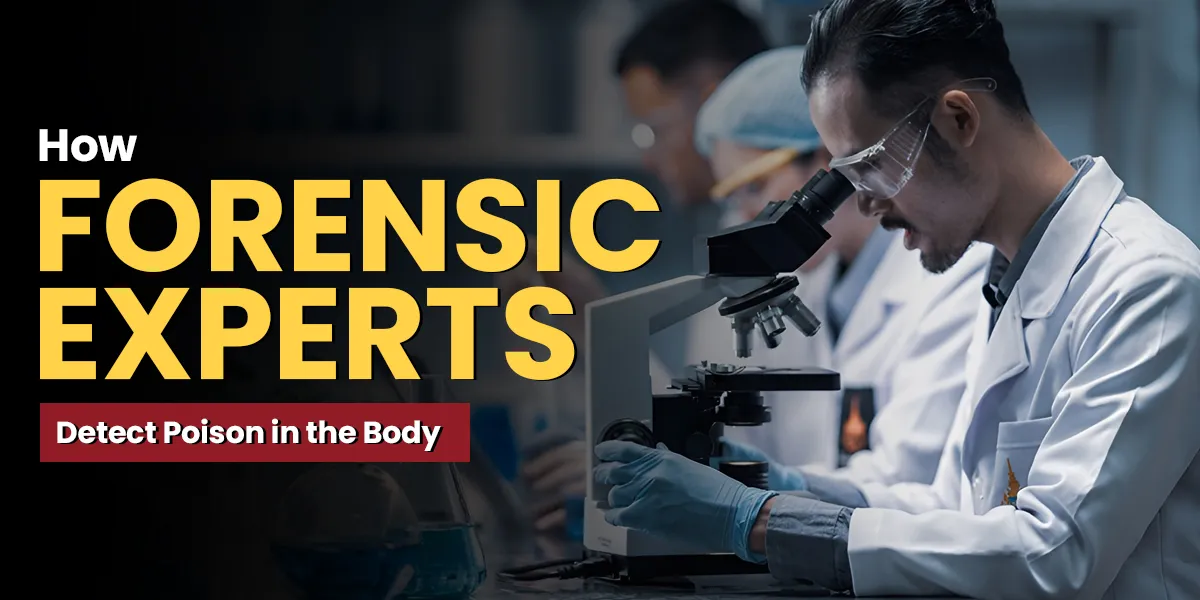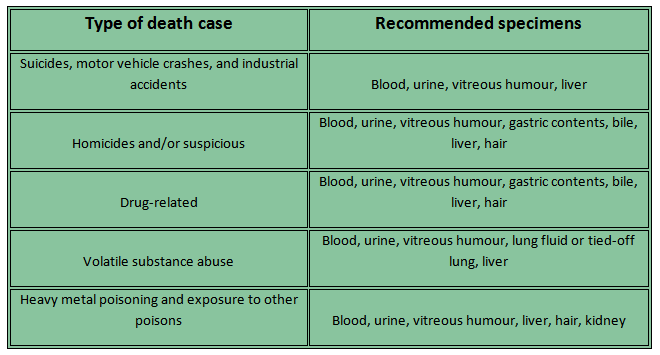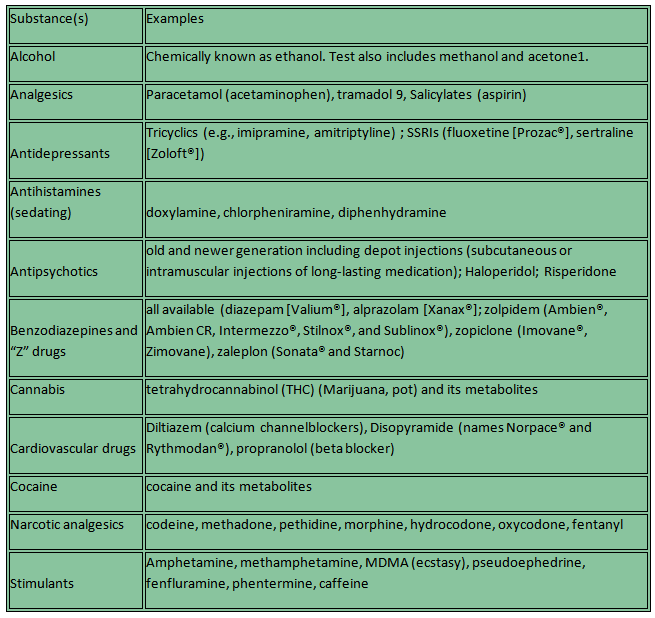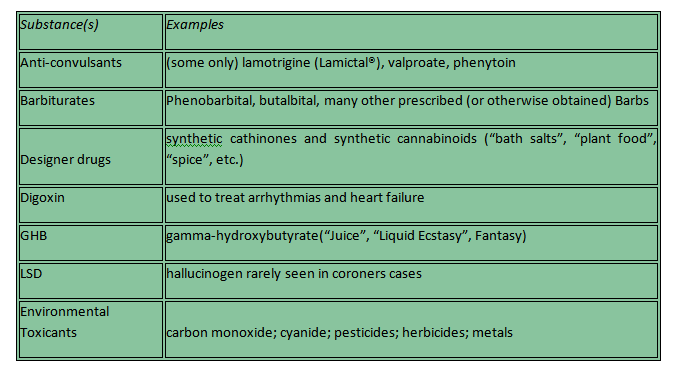
Have you ever wondered how forensic specialists and detectives determine whether a person has taken drugs or been poisoned? Toxicology provides a thorough response to this question. Toxicology is an inevitable field if you have even the smallest interest in a career in forensic science or a preference for forensic investigations. Let's explore this field and learn how toxicology is essential to identifying dangerous drugs and supporting forensic investigations.
Toxicology and its types
Toxicology refers as the study of toxins, poisons, and the detrimental effects of substances. Toxicologists, who are experts in this discipline, employ sophisticated techniques to identify and detect toxins, particularly when determining the origin of a disease, damage, or even death.
The scientific field of toxicology generally determines the ways in which biological agents, chemicals, and physical elements affect living things. Understanding the possible effects of novel chemical compounds on both humans and the environment is essential given how quickly they are developing in the modern day. As our guardians, toxicologists employ cutting-edge techniques to identify and assess these sometimes undetectable dangers, guaranteeing a safer atmosphere for all.
Types of Toxicology
Forensic Toxicology: The legal system and toxicology are integrated in this branch. Finding drugs and poisons in the body and comprehending their consequences in relation to criminal investigations or unintentional fatalities are important areas of emphasis.
Environmental Toxicology: The type of toxicology generally investigates how dangerous substances interact with our environment and assesses the negative health impacts.
Medical Toxicology: Focuses on how medications and medical procedures affect people. Medical toxicologists determine appropriate doses and identify drug negative effects.
Clinical Toxicology: Focuses on diagnosing and treating people who have been exposed to toxins; this is frequently done in hospital settings.
Food Toxicology: Focuses on dangerous substances found in our food, making sure that it is free of additives, pollutants, and natural poisons.
Occupational Toxicology: Investigates the health effects of chemical exposures at work with the goal of protecting employees by establishing acceptable exposure thresholds.
Detecting Drugs and Poison in Toxicology
During an autopsy, the forensic pathologist or mortuary technician generally collects specimens submitted for toxicological testing. As quickly as possible after collecting, specimens must be correctly identified, labeled, and sealed. Each specimen related to a case has to be gathered and placed in a separate bag in a container that cannot be tampered with. Every case's evidence is tracked using distinct numbered seals. For legal reasons, the chain of custody—from the mortuary to the laboratory testing, reporting, and storage—must always be maintained, just like any other piece of evidence. The case may be dismissed in court if the continuity of the evidence is jeopardized.
Specimen collection
Although certain investigations may require special case requirements, Table 1 (below) gives an overview of the types of samples that are frequently required when looking into various ways of death. For instance, a sample of the lung fluid is necessary when exposed to volatile chemicals. To ascertain past exposure to drugs and other substances, skeletal remains might be helpful. Hair can also be sampled in these situations.
Table 1: Suggested specimens obtained in circumstances involving post-mortem

Blood, Urine, Liver
For the detection, measurement, and interpretation of drug and other toxicant concentrations, blood is frequently the preferred specimen. Drug and other toxicant concentrations in blood can be used to prove recent drug usage and to assess how a substance affected the dead at the time of death or when the blood was drawn. When someone has been using prescription drugs for a while, this might make the inquiry more difficult. Blood samples obtained shortly after admission and right before death should also be examined in situations involving hospital care prior to death, especially if poisoning is suspected prior to hospital admission.
The most popular sample for workplace drug testing is urine; however post-mortem testing does not usually have access to it. Urine test results do not always reflect drug effects at the time of sample collection because it takes time for the body to get rid of metabolites or drugs. It is helpful because the presence of a chemical in the urine indicates that the substance was in the blood in the past and has undergone some processing.
Since the liver is where the body metabolizes the majority of medicines and toxicants, it is a principal solid tissue for use in post-mortem toxicology.
Testing
Testing biological tissues or fluids for drugs and other substances is a complicated procedure that calls for highly skilled analyzers and advanced equipment. Fluids and tissue samples are taken especially for toxicological testing during a normal autopsy. The specifics of the case and the state of the body dictate the kinds of samples that are taken from the body as well as the testing objectives in these biological fluids and tissues.
The biological data needed to support both "standard" laboratory testing and the examination of a few very specific potential causes of death is provided by autopsies. The medicines listed below in Table 2 are typically included in routine testing, or testing without special instructions to check for a particular chemical, however not all pharmaceuticals are. Every toxicology report has a standard attachment with the list of the most frequently found substances.
Table 2: Drugs included in routine post-mortem toxicology

Depending on the specifics of a case, the toxicology laboratory may get additional or targeted requests. Table 3 below lists the most typical instances of particular medications that analysts could be requested to search for.
Table 3: Drugs not routinely included in death investigation toxicology screens

Poison
There are several ways that poisoning can cause death, including inhaling solvents like butane lighter fluid or fuels while having fun, consuming substances derived from plants like Angel's Trumpet, unintentionally coming into contact with substances used at work or even made in the home such as carbon monoxide, or suicidal ingestion of poisons like pesticides, strychnine, cyanide, etc. All of these need specific testing, and when requests for toxicological testing are made, the lab is informed of their potential use or connection to the death.
Here is how the Analysis is performed
The analytical findings are gathered and evaluated together for their toxicological relevance following the completion of all analyses of a particular extract and a comprehensive assessment for scientific completeness. Drug concentrations, the type of sample used to measure them, any possible drug interactions, and the specifics of the case, including any unique considerations, are all important factors to take into account in this situation.
To evaluate the effects of various medications at varying doses and under varying conditions, the toxicologist often has to perform a comprehensive examination of the scientific literature. Following the completion of each analysis step, the toxicologist writes a report outlining the samples that were examined, the analytical conclusions, and the procedures used to arrive at the results. The toxicologist's findings and assertions on sample management, evidentiary continuity, and chain of custody are also included in this report. After then, the scientist could be asked more questions on the report's contents.
Conclusion
Finding the truth about drug use, poisonings, and inexplicable fatalities depends heavily on toxicology. Forensic toxicologists may identify the presence of dangerous chemicals and assess their effects on a person by methodically gathering and examining biological samples, including blood, urine, liver tissue, and even hair or bone. Even the most concealed residues of poison or drugs are accurately and scientifically exposed when toxicological science is incorporated into forensic investigations. Through careful chemical analysis and knowledgeable interpretation, toxicology continues to be a vital instrument in the ongoing evolution of forensic science, helping to ensure justice and public safety.